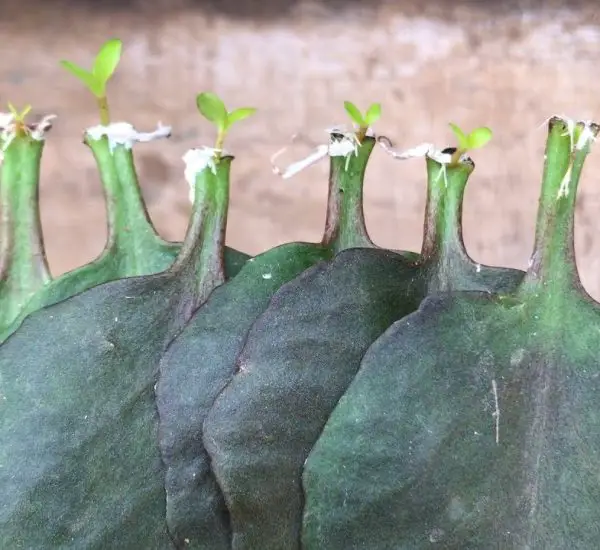Growing melons at home can be an incredibly rewarding experience, and with the right tips, you can enjoy super-sweet, juicy melons straight from your own garden or balcony. While growing melons traditionally requires a lot of space, you can still produce high-yield melons in plastic containers. With a few simple steps and a little care, you can transform your plastic containers into the perfect growing space for these delicious fruits. Here’s how I successfully grow melons in plastic containers and make them thrive.
🌱 Why Grow Melons in Plastic Containers?

Growing melons in plastic containers is an excellent option for those with limited space, such as balconies, patios, or small gardens. It allows you to grow super-sweet melons even in urban environments. Not only does container gardening save space, but it also provides better control over soil conditions and watering. Here are some benefits of growing melons in plastic containers:
- Space-saving: Ideal for small spaces or urban areas.
- Better soil control: You can easily adjust the soil composition and drainage in containers.
- Easier watering: Containers help retain moisture and reduce the risk of overwatering.
- Portable: You can move containers to optimize sunlight exposure.
🍉 Step-by-Step Guide to Growing Melons in Plastic Containers
1. Choose the Right Container
The first step to growing melons in plastic containers is to select the appropriate container. A large plastic container (at least 18-24 inches deep) is ideal for melon plants. You’ll need enough space for the roots to spread and for the melon vines to grow. A container that holds about 10-15 gallons of soil is a good size to allow the plant to thrive.
Make sure the container has drainage holes at the bottom to prevent waterlogging, which can lead to root rot. If needed, drill extra holes to ensure proper drainage.
2. Use High-Quality Soil
Melons thrive in well-draining soil that is rich in nutrients. I recommend using a potting mix designed for vegetables or melons, mixed with a bit of compost to improve soil fertility. The soil should be light and fluffy, allowing water to drain freely while holding enough moisture to nourish the melon plant.
3. Plant Melon Seeds or Seedlings
Once your container is ready, it’s time to plant your melon seeds or seedlings. If you’re starting from seeds, plant them 1 inch deep into the soil. Watermelon and cantaloupe varieties are great options for container gardening.
Leave some space between seeds, about 4-6 inches apart, to allow the vines to spread out. If you’re using seedlings, transplant them carefully into the soil, ensuring the roots aren’t disturbed too much.
4. Watering and Care
Melons require a lot of water, especially as they grow, but it’s important to avoid overwatering. Use a watering can or drip irrigation system to water the plants thoroughly but allow the soil to dry slightly between waterings. Plastic containers help retain moisture, making it easier to regulate watering.
To promote healthy growth, you can apply a liquid fertilizer every 2-3 weeks to encourage the production of strong vines and large melons. Make sure to mulch the top of the soil with leaves or straw to help retain moisture and reduce weed growth.
5. Providing Support for Vines
Melon vines can grow quite long, so they’ll need support as they expand. Use a trellis or stakes to guide the vines upward. This helps keep the melons off the ground, reducing the risk of rotting and allowing for more airflow, which can prevent diseases.
As the vines grow, it’s important to prune any excessive growth to allow the plant to focus on producing fruit. Trim any dead or damaged leaves to keep the plant healthy.
🌞 Tips for High-Yield Melons
1. Sunlight is Key
Melons are sun-loving plants and need at least 6-8 hours of direct sunlight every day to produce sweet, juicy melons. Place your container in a sunny spot on your balcony or patio to ensure the plants receive enough light.
2. Keep the Plant Cool
While melons need sunlight, they also require some cooling during the hotter months. During extremely hot weather, consider moving your container to a slightly shaded area during the hottest part of the day to prevent the plants from overheating.
3. Pruning for Better Fruit
Prune the melon vines to focus energy on fruit production. Cut off any excess growth or non-fruiting branches to direct the plant’s energy into producing larger, juicier melons. Pinching off the tips of the vines can also help stimulate fruiting.
🍉 Harvesting Your Melons
After a few months of growing, your melons will start to mature. Here’s how to tell when they are ready to be harvested:
- Color change: The melon should have a deep, vibrant color, and the skin should appear smooth and shiny.
- Sound: Tap the melon and listen for a hollow sound, which indicates it’s ripe.
- Stem: The stem of the melon will start to dry out and turn brown when the melon is ready for harvest.
- Smell: A ripe melon will have a sweet, fruity aroma at the base.
🍉 Conclusion: Enjoy Your Homegrown Melons
Growing melons in plastic containers is a fun and rewarding way to enjoy homegrown, fresh fruit without requiring a lot of space. By following these simple tips and taking care of your melon plants, you can grow super-sweet, high-yield melons right at home. Whether you’re growing watermelons or cantaloupes, the key is providing them with good soil, plenty of sunlight, and proper care.
Start your own melon garden today and enjoy the satisfaction of harvesting delicious, homegrown fruit—all from the comfort of your balcony or patio! 🍉🌞



